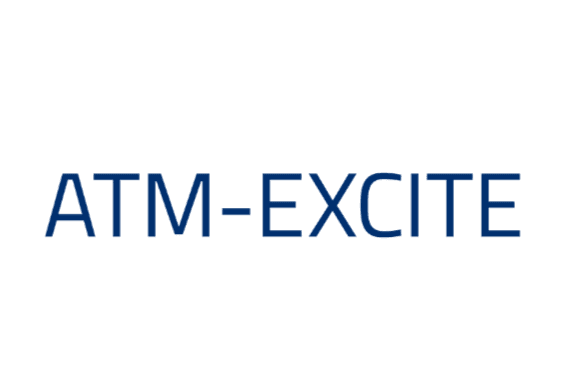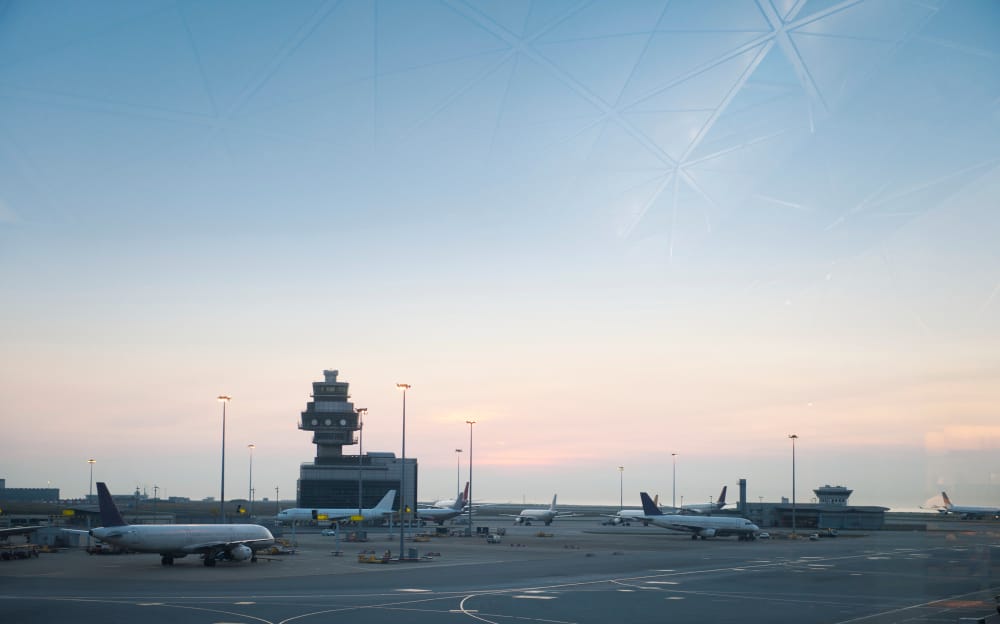Table of contents
ToggleAs Europe accelerates toward its 2050 climate neutrality target under the European Green Deal, green aviation has emerged as a critical priority, with the aviation sector accounting for 3.8% of total EU CO2 emissions—equivalent to 893 million tonnes annually—and requiring systematic decarbonization to meet ambitious climate goals. At the forefront of this transformation is ATM-EXCITE, an EU-funded initiative redefining how air traffic CO2 reduction can be achieved. By improving civil-military coordination and modernizing air traffic management, ATM-EXCITE supports more efficient and sustainable flight operations. This article explores how green aviation corridors are reshaping European airspace, and why ATM is central to making them a reality.
The EU green deal and the push for sustainable aviation
In December 2019, the European Commission launched the EU Green Deal, a comprehensive strategic framework requiring a 90% reduction in transport emissions by 2050 to achieve climate neutrality, with aviation specifically mandated to contribute proportionally to this target despite its 5% annual growth trajectory. Aviation generates 13.9% of EU transport emissions, making it the second-largest source of greenhouse gas emissions in the transport sector after road transport, with additional non-CO2 climate impacts from high-altitude emissions including nitrous oxides, water vapor, and contrail formation that amplify its environmental footprint.
Although aviation represents 3.8% to 4% of total EU greenhouse gas emissions as of 2022, the sector’s rapid expansion—with emissions growing 5% annually between 2013 and 2018—combined with its international regulatory complexity and infrastructure requirements, makes decarbonization significantly more challenging than other transport modes
To address these challenges, the Green Deal emphasizes multiple technology pathways including sustainable aviation fuels, advanced aircraft design, and critically, the digital transformation of air traffic management systems through initiatives such as the SESAR 3 Programme’s Digital European Sky vision. Within this vision, green aviation corridors emerge as a pivotal solution to transform European airspace into a more efficient, environmentally responsible ecosystem.
Air traffic management (ATM) plays a crucial role in this transition. Through optimized flight planning, advanced digital tools, and seamless coordination between civil and military airspace users, ATM enables aircraft to fly more direct, fuel-efficient routes. This not only reduces delays and emissions but also enhances operational predictability and safety.
Projects such as ATM-EXCITE are fully aligned with the Green Deal’s goals. By enabling smarter ATM systems and collaborative airspace usage, these initiatives contribute directly to aviation corridors sustainability, supporting cleaner skies across Europe.
The synergy between the EU’s environmental goals and next-generation ATM technologies is not just visionary, it’s becoming a practical, measurable path toward a greener future for aviation.
What are green aviation corridors?
Green aviation corridors are optimized flight paths designed to minimize environmental impact while maintaining safety and efficiency. Unlike conventional air routes, which may follow fixed and sometimes inefficient trajectories, green corridors are dynamic and data-driven, allowing aircraft to fly the most fuel-efficient paths based on real-time conditions.
These corridors integrate a range of modern technologies and procedures, such as satellite-based navigation, continuous climb and descent operations (CCO/CDO), and trajectory-based operations (TBO), to reduce fuel consumption, flight time, and ultimately, CO₂ emissions. By leveraging enhanced surveillance and communication systems, they allow for smarter routing and reduced airspace congestion.
In the context of green aviation, these corridors represent more than just optimized routes; they are a cornerstone of a broader shift toward sustainable airspace management. They reflect a proactive approach to balancing increasing traffic demands, including the integration of drones and unmanned vehicles, with the urgent need to cut emissions and reduce environmental harm.
Across Europe, the development of green corridors is being supported by initiatives such as SESAR3 and ATM-EXCITE, which aim to demonstrate how collaborative airspace planning and advanced ATM can enable more sustainable aviation. These corridors are often tested across cross-border regions, highlighting the importance of pan-European coordination in tackling climate challenges.
By transforming how aircraft navigate the skies, green aviation corridors are proving that sustainability and innovation can, and must, go hand in hand in the future of air travel.
The role of air traffic management (ATM) in sustainable aviation
Air Traffic Management serves as a fundamental enabler of sustainable aviation by offering immediate, implementable solutions that can reduce aviation emissions in the short term while sustainable aviation fuels and next-generation aircraft technologies are developed and scaled to commercial viability.
While aircraft design improvements and sustainable aviation fuels represent the greatest long-term decarbonization potential, ATM optimization delivers immediate environmental benefits, with operational efficiency measures such as continuous descent operations capable of reducing fuel consumption by 20-40% per descent and eliminating up to 340,000 tonnes of fuel consumption annually across Europe. Efficient ATM reduces delays, shortens flight paths, and limits unnecessary fuel burn, key elements for air traffic CO2 reduction.
One of the main contributions of ATM to sustainability is route optimization. With advanced systems and predictive tools, ATM enables aircraft to fly direct trajectories, avoiding inefficient detours and weather disruptions. This results in lower fuel consumption, reduced engine wear, and a measurable cut in greenhouse gas emissions.
Another area where ATM drives sustainability is in minimizing holding patterns and airborne delays. Congestion at busy airports often forces aircraft to circle for extended periods, wasting fuel. With enhanced coordination and data sharing, modern ATM systems allow for better sequencing and smoother landings, reducing this waste significantly.
Additionally, digitalization and automation are transforming ATM into a smarter, more adaptive system. Advanced tools including machine learning-driven conflict detection systems, four-dimensional trajectory management that integrates time-based operations, and collaborative decision-making platforms that coordinate between airlines, airports, ANSPs, and military authorities enable real-time flight path optimization that simultaneously enhances safety performance and reduces environmental impact through more efficient routing and separation management.
Sustainable ATM practices are also about integration. As drones and unmanned aircraft become more prevalent, ATM must evolve to manage a more complex airspace efficiently. Projects like ATM-EXCITE are at the forefront of this transformation, exploring new methodologies for integrating civil and military airspace while prioritizing environmental goals.
By improving the way aircraft move through the sky, ATM is not just supporting green aviation, it’s actively shaping its future.
ATM-EXCITE and civil-military coordination for greener skies
ATM-EXCITE project is leading transformative change. Traditionally, large segments of European airspace have been reserved for military use, often resulting in longer and less efficient flight paths for civil aircraft. These detours lead to increased fuel consumption and, consequently, higher CO₂ emissions.
ATM-EXCITE, funded under the SESAR3 Joint Undertaking and supported by the European Union’s Horizon Europe program, is addressing this challenge head-on. The project aims to enhance collaborative airspace usage between civil and military stakeholders through innovative digital tools, procedures, and data sharing strategies.
By improving real-time coordination, ATM-EXCITE enables more flexible access to restricted airspace, allowing civil aircraft to fly shorter, more direct routes even through formerly off-limits zones. This results in significant reductions in flight time, fuel use, and emissions, contributing directly to the development of sustainable aviation corridors.
Importantly, ATM-EXCITE’s approach is not only technical but also strategic. The project promotes the creation of a harmonized framework for civil-military airspace integration across Europe, aligning national defense requirements with environmental and operational efficiency goals. It also supports the scalability of its solutions, ensuring that smaller states and less digitalized systems can also participate in greener ATM practices.
This kind of integrated airspace management is crucial as air traffic becomes more diverse, with commercial jets, cargo flights, unmanned aircraft, and military operations sharing increasingly complex skies.
Through civil-military synergy, ATM-EXCITE proves that environmental responsibility and operational readiness are not mutually exclusive, but rather, mutually reinforcing.

Green airspace initiatives in Europe: Real projects & results
Across Europe, several groundbreaking initiatives are redefining how airspace is managed in support of green aviation. These projects go beyond theoretical frameworks, they are delivering measurable results in reducing emissions and increasing operational efficiency.
One of the most impactful developments is the implementation of Free Route Airspace (FRA). FRA allows aircraft to fly the most direct and efficient route between two points, rather than following predefined airways. This flexibility significantly reduces fuel burn and flight time. According to EUROCONTROL, FRA has already saved over 6 million tons of CO₂ since its progressive rollout, making it a cornerstone of air traffic CO2 reduction strategies.
Several countries, including Ireland, Portugal, Sweden, and Poland, have successfully implemented cross-border FRA, demonstrating that coordinated, transnational solutions are both feasible and highly effective. These implementations have shown not only environmental benefits but also improvements in punctuality and airspace capacity.
At the heart of many of these advances lies SESAR3, the European research and innovation program driving ATM modernization. Projects under SESAR3, including ATM-EXCITE, are testing and deploying new concepts such as dynamic airspace configuration, collaborative traffic flow management, and digital tools that support greener flight operations.
Moreover, green aviation corridors are being piloted to evaluate how advanced ATM systems can support continuous climb and descent operations, optimized trajectories, and civil-military integration. These trials are essential in refining sustainable models before full-scale implementation across the continent.
Europe’s leadership in green airspace initiatives proves that sustainability and innovation can coexist. Through collaborative projects and digital transformation, the region is setting a global benchmark for the future of ATM and sustainable aviation.
Overcoming challenges to implement sustainable corridors
While the benefits of green aviation corridors are clear, implementing them across European airspace presents several complex challenges, both technical and institutional.
One major barrier is airspace sovereignty. Airspace management remains under national jurisdiction, and aligning civil-military priorities across borders requires extensive negotiation and trust. Ensuring seamless coordination while respecting national security concerns is a delicate balance that ATM initiatives like ATM-EXCITE are helping to achieve through standardized procedures and shared protocols.
Another challenge is technological disparity. Not all aircraft and air traffic control systems across Europe are equally equipped to support sustainable operations. Some older aircraft lack the avionics required for continuous climb or descent operations, while certain control centers may not yet have access to advanced digital tools like trajectory-based operations (TBO) or real-time data exchange platforms.
Operational integration is also a hurdle. The growing number of unmanned aerial systems (UAS), drones, and new entrants into the airspace introduces added complexity. ATM systems must evolve to manage this traffic safely and sustainably, without compromising efficiency for traditional aviation.
Moreover, the transition to sustainable aviation corridors demands policy alignment and regulatory support. Consistent implementation across European states requires cooperation between aviation authorities, defense sectors, air navigation service providers (ANSPs), and the EU’s governing bodies.
Despite these challenges, collaborative projects under SESAR3 and Horizon Europe are paving the way. By addressing the gaps in technology, governance, and operations, Europe is steadily moving toward a unified, sustainable airspace system.
Looking ahead: The future of green aviation corridors
The journey toward green aviation is far from over, but the direction is clear. As technology evolves and collaboration deepens across the aviation ecosystem, green aviation corridors are poised to become the new standard for sustainable airspace management.
One major trend shaping the future is the continued digitalization of ATM. Tools such as AI-driven trajectory prediction, enhanced surveillance, and machine-learning algorithms will enable even greater route optimization and faster responses to traffic or weather changes. These innovations will make ATM systems smarter, safer, and significantly more efficient.
Another key factor is the integration of unmanned aerial systems (UAS) and advanced air mobility (AAM) into shared airspace. As drones, air taxis, and other novel aircraft types become more common, ATM must evolve to coordinate a broader variety of traffic, while maintaining sustainability goals. Dynamic airspace allocation and real-time data exchange will be essential for managing this complexity.
Projects like ATM-EXCITE and the broader SESAR3 program are laying the foundation for these next steps. Their focus on interoperability, civil-military integration, and scalable solutions ensures that even smaller air navigation service providers and less-equipped countries can adopt future-ready practices.
Ultimately, aviation corridors sustainability will depend not only on technology but also on sustained policy alignment, stakeholder engagement, and public-private investment. The future of green aviation corridors is collaborative, data-driven, and ambitious, and Europe is positioning itself at the forefront of this transformation.
Frequently Asked Questions (FAQ)
Below are some of the most common questions about green aviation corridors and the role of ATM in reducing CO₂ emissions, answered clearly and concisely to help you better understand this evolving field.
What is a green aviation corridor?
A green aviation corridor is an optimized flight path designed to reduce environmental impact by minimizing fuel consumption and CO₂ emissions. Unlike traditional fixed routes, these corridors use real-time data and advanced ATM systems to enable more direct, efficient, and eco-friendly trajectories. They are a key part of Europe’s effort to make air travel more sustainable and are supported by initiatives like SESAR3 and ATM-EXCITE.

How does ATM help reduce CO₂ emissions?
Air Traffic Management (ATM) helps reduce CO₂ emissions by optimizing flight routes, minimizing delays, and enabling continuous climb and descent operations. These improvements result in shorter flight times and less fuel burned. Projects like ATM-EXCITE further enhance ATM’s role by improving civil-military coordination, opening access to more direct airspace, and supporting technologies that drive air traffic CO₂ reduction.
Are there green airspace initiatives in Europe?
Yes. Europe is a global leader in green airspace initiatives, with projects such as Free Route Airspace (FRA) and cross-border collaborations supported by SESAR3. These efforts allow aircraft to fly the most efficient routes across multiple countries. Additionally, projects like ATM-EXCITE are piloting innovative solutions that integrate sustainability, technology, and civil-military coordination to build a cleaner and more efficient European airspace.
With initiatives like ATM-EXCITE leading the way, Europe is proving that innovation, collaboration, and advanced air traffic management can turn green aviation corridors from vision into reality, securing a more sustainable future for our skies.






